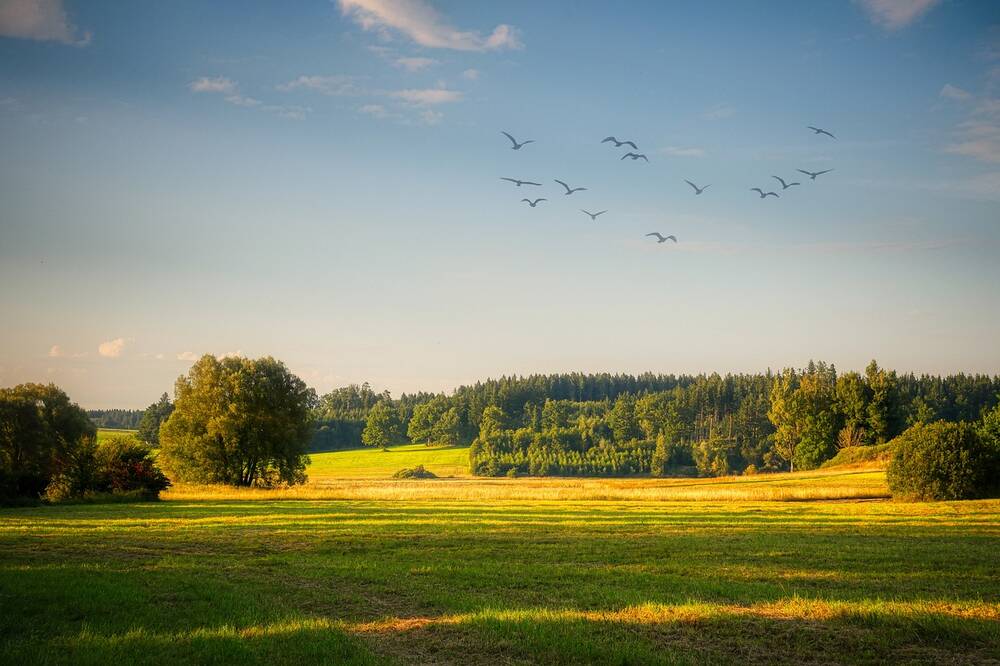A vital element of the Biodiversity Net Gain policy is the Spatial Risk Multiplier. When developers have exhausted all on-site BNG options, they must purchase local off-site BNG units that match specific habitat requirements.
When these are not immediately available in the specific Local Planning Authority or National Character Area, the Spatial Risk Multiplier allows developers to purchase the units within a neighbouring area.
If these areas still lack available units, they can finally purchase the units at a national level from anywhere in the country. However, they must purchase more units to make up for the distance.
What is the Spatial Risk Multiplier?
The Spatial Risk Multiplier (Spatial Risk Multiplier) is a vital yet often overlooked component of England’s Biodiversity Net Gain (BNG) policy. It operates as a key tool for both landowners selling off-site biodiversity units and the developers and organisations purchasing them.
The BNG Policy
The UK is widely recognised as being in a biodiversity crisis, with urbanisation and large-scale development as two of the main contributors. With only 53% reported remaining in 2021, we have some of the lowest levels of biodiversity intactness in the world.
Biodiversity Net Gain is a way for development to continue in a sustainable way; repairing the environment rather than degrading it. BNG legislation mandates that habitats lost to development must be replaced or enhanced to achieve at least a 10% net gain in biodiversity across England.
Planning applications will be denied unless they clearly can demonstrate how a 10% net biodiversity gain will be achieved and maintained over a 30-year period.
The Statutory Biodiversity Metric was created by Defra, with significant input and collaboration from Natural England. It is a tool for measuring biodiversity through habitats to determine the baseline site biodiversity, as well as the amount of biodiversity that will be lost in development.
It then accounts for any on-site habitat creation/enhancement, and finally how many BNG units must be purchased off-site to meet the 10% mandated gain.
The Spatial Risk Multiplier for BNG
The Spatial Risk Multiplier (Spatial Risk Multiplier) imposes unit penalties the farther the purchased units are from the original development site. It’s layered in the metric, 1 of 3 ‘post-intervention multipliers’ on the number of units required to meet the 10% gain.
When all on-site habitat creation options have been exhausted, you must look to purchase off-site biodiversity units. These must be within the development site’s Local Planning Authority (LPA), e.g. ‘Cornwall’, or within its National Character Area (NCA), e.g. ‘Yorkshire Dales’.
In some cases, sourcing units in these immediate boundaries is impossible, as they may have to meet certain unique habitat requirements, conditions, amounts and distinctiveness levels.
The Spatial Risk Multiplier addresses this issue: when local units aren’t available, you can purchase within a neighbouring LPA or NCA, though distance penalties increase the number of required units.
At an approximate average of £28,500 per unit, having to purchase more can be very costly.
If no units are available in neighbouring LPAs or NCAs, the final option is to purchase units at a national level. This means you can buy the correct BNG units for the development from anywhere in England, but at an even higher number of units, to penalise for the farther distance.
This policy is designed to incentivize local nature recovery. When local restoration isn’t feasible, it ensures that recovery takes place elsewhere, but on a larger scale.
The Purpose of the Spatial Risk Multiplier
The Spatial Risk Multiplier aligns with the Mitigation Hierarchy principle.
BNG is about recreating lost habitats as close to the development site as possible, to ensure ecosystem continuity, preserve genetic diversity, and to provide direct benefits for local wildlife and communities.
The purpose of the Spatial Risk Multiplier is that in BNG’s nascence, units might not be available in every single one of the 337 Local Planning Authorities or 159 National Character Areas.
Some builds will require specific habitats that must be recreated—such as the Very High Distinctiveness Wetland – Oceanic Valley mire, which can be a lot harder to come by and could likely have to be purchased nationally.
Demand will also surpass supply in areas with densely concentrated development, meaning people could have to look in areas outside the site’s immediate boundaries.
Moreover, areas like London, with 33 LPAs and 13 NCAs, may encounter growing challenges in accommodating off-site BNG units due to limited available land. This could force developers to look further afield for viable sites while causing intensified competition for the remaining available spaces.
How it Works

Categories and Scores
When you purchase off-site biodiversity units within the development site’s LPA or NCA, there is no penalty, as the nature restoration is happening close to the site. So, if you needed to buy 5 Area units, you’d only need to buy 5 (which could be around £142,500).
Within a neighbouring LPA/NCA, you must purchase at a 1.3:1 ratio. In this example, you’d have to buy 6.5 units (which would then rise to around £185,250).
Finally, purchasing at a national level, you’d have to purchase 10 BNG units at a 2:1 ratio (taking the price to £285,000).
The size of an off-site biodiversity unit can vary, but on average is approximately one-third of a hectare. In this scenario, although the developer incurs double the cost and local nature restoration isn’t achieved, the positive outcome is that 3.125 hectares of habitat are restored—double what would have been achieved locally.
Advice for Developers
The Spatial Risk Multiplier is designed to support developers. One key point to note is that there are twice as many LPAs compared to NCAs (337 vs 159), meaning NCAs generally cover larger areas. This can provide developers with greater flexibility in sourcing neighbouring units when none are immediately available.
Our BNG Marketplace is a fantastic, free resource that all developers should be aware of. Not only can you browse BNG units in specific LPAs and NCAs, but you can easily toggle the ‘search in neighbouring LPA/NCA’ button. You can then sort all of these listings—which match specific habitat requirements—by price.
Furthermore, when no units are available in your LPA/NCA or in your neighbouring LPA/NCA, the platform automatically lists all available national units matching your requirements, listed from cheapest to most expensive.
Finally, if you still can’t find suitable units, you can submit a Unit Request which we will correspond with our 150+ sellers to find a match.

